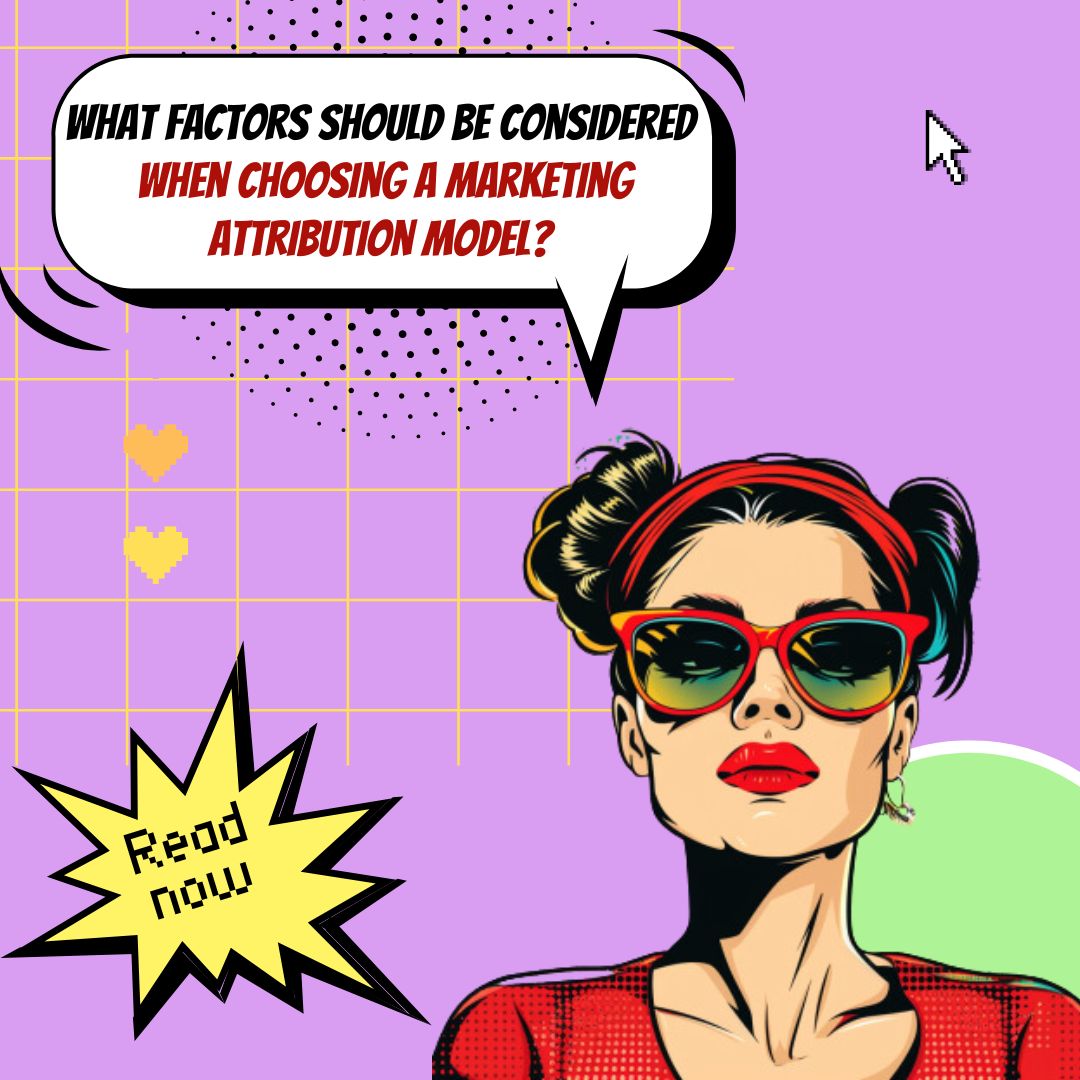Key Takeaways
✅ The best marketing attribution model depends on your specific business goals, marketing activities, and customer journey complexity; common models include last-click, first-click, and multi-touch attribution.
✅ Multi-touch attribution models, like linear or time decay, provide a more comprehensive view by distributing credit across multiple touchpoints, acknowledging the entire conversion path.
✅ Evaluating and adapting the chosen attribution model regularly is crucial as it must align with evolving marketing strategies and technologies to remain effective.

Introduction
Have you ever felt like you're just throwing money into the wind with your marketing efforts, hoping it'll somehow circle back with interest? That's where a marketing attribution model steps in, like a financial advisor for your marketing spend, plotting the course of every dollar and cent as it journeys through the marketplace. But doing it right? That's the million-dollar question: What is the best marketing attribution model?
In this walk-through of the world of marketing attribution models, we'll unpack the importance of understanding your customer journey in the relentless game of modern marketing. If you've been searching for innovative perspectives or cutting-edge trends that push the envelope on maximizing your revenue, return on ad spend (ROAS), or return on investment (ROI), you're in exactly the right place.
Stick with us as we tease apart the complex web of attribution models, trying on each one to see which could give your marketing the clearest path to success. By the end of this article, you'll have in your hands not just information, but actionable insights and groundbreaking strategies tailored to make your marketing budget work smarter, not harder. Ready to dive in? Let's unravel the mystery and find your golden ticket to an optimized marketing strategy.

Top Statistics
| Statistic | Insight |
|---|---|
| Shift in Attribution Models: 64% of B2C marketers plan to change their primary attribution model within two years. (Source: Forrester Research) | This shows that marketers are on the hunt for the best marketing attribution model that aligns with the dynamically changing customer journey. |
| Preference for Attribution Models: Over half of marketers (53%) are using multi-touch attribution models, with only 8% on single-touch models. (Source: AdRoll) | Marketers are recognizing that multiple points of engagement are critical to understanding the full path to purchase. |
| Enterprise vs Small Business: 79% of companies with annual revenues over $5 billion use advanced attribution models versus 50% with less than $1 million. (Source: Econsultancy) | Larger companies have more robust data streams and resources to implement complex attribution frameworks, potentially offering them a competitive edge. |
| B2B vs B2C Adoption: 52% of B2B and 42% of B2C marketers currently apply multi-channel attribution models. (Source: Econsultancy) | Both sectors value the insights from multiple touchpoints, but there's still room for growth, especially in B2C. |
| Marketing Analytics Market Growth: Predicted to reach $6.64 billion by 2027 with a CAGR of 14.4%. (Source: Allied Market Research) | The expansion of this market reflects an increasing demand for deep, actionable insights into marketing performance. |
Exploring the Ingredients of Marketing Attribution Models
When you're cooking up a marketing strategy, marketing attribution models are like your recipe cards. They help you understand which ingredients—advertisements, emails, social posts, you name it—are really making the dish sing. Wondering what makes each customer decide to take a bite? Attribution models are the answer.

Mapping Out the Customer's Path to Purchase
Think of your customer's journey as a treasure map. To reach the X that marks the spot (a sale), customers follow various paths. Maybe they saw your ad first, then clicked on an email you sent, and finally saw an Instagram post that sealed the deal. Like a good treasure hunt, it's thrilling to trace their steps and figure out which clue most inspired them to dig for that treasure.
Weighing Your Options in the Attribution Model Party
Choosing your go-to attribution model is a bit like picking your favorite dessert—it heavily depends on taste and personal goals. If you're looking to keep things simple, you might opt for a classic pie like First-touch or Last-touch attribution. Or, if you're catering to a crowd (aka your mix of marketing channels), you might want a more complex dessert tray that represents Data-driven or Linear attribution. Each model has its own flavor, with strengths and weaknesses you'll want to savor and assess.
The Art of Applying the Right Attribution Model
Once you've chosen your model, you've got to see if it tastes right. This means using tools like UTM parameters or cookies—marketing tracking tools—to make sure you're gathering all the ingredients' data. Then you pour that data into your analytics platform and keep an eye on what's delighting your customers. If something's off, don't be afraid to experiment with your recipe until the flavors are balanced just right.
In the grand kitchen of marketing, attribution models help us understand how each ingredient contributes to the success of the meal. With them, you get a clearer picture of what lifts your strategies from just good to a crowd-pleaser. Have you found the right attribution model that adds the perfect flavor to your marketing feast?

Choosing the Right Attribution Model
When you're standing at the crossroads of attribution models, think of it like picking the right outfit for an occasion. What's the goal of your shindig (business)? Are you throwing a laid-back BBQ (simple sales cycle) or a glitzy gala (complex sales cycle)? Perhaps you want to know every detail about how your guests decided to show up? That's where your tech capabilities step in. Can you handle complex data-crunching (Data-driven) without blowing your budget? Or are you more of a keep-it-simple-with-what-you-know (First-touch or Last-touch) kind of organizer? Your choice here can really shape the future parties (campaigns) you throw.
Pros and Cons of Popular Models
Weighing the pros and cons of each model is like choosing where to seat your guests. First-touch is straightforward, but might be a bit short-sighted, like only remembering the first person who RSVP’d. Last-touch is your trusty cleanup crew, always there at the end, but may not reflect the whole night's efforts. Linear is the democratic option, giving a nod to every interaction, yet possibly oversimplifying individual contributions. Time decay adds a nice twist, valuing recent run-ins over older ones, a bit like favoring the late-night dance floor heroes. The Position-based model is thinking of your party as a sandwich, the good stuff is at the beginning and the end. For the tech-savvy, the Data-driven approach is nothing short of a magic 8-ball, but remember, it requires heaps of data (just like you need lots of snacks for a snack guru to make a sound judgment).
Implementing Your Chosen Model
So, you’ve picked your leading man or lady for the night. Now it's tracking time. UTM parameters are like those colorful wristbands at events - they track the comings and goings. And cookies? They’re your guest book, helping you remember who hung out where. Now, toss all those memories (data) into a trusty album (your analytics platform). Watch the story unfold, spot where people gathered (converted), and fine-tune your tactics—much like you’d change the music to keep the dance floor alive.
Remember, while you might be eager to nail down that perfect party formula, keep in mind that the world of attribution models isn't static. It evolves just like party trends do. So, keep an eye on your guests, see what makes them tick, and be ready to switch up your plan to host that unforgettable event. What’s your move going to be? Will you stick to the classics, or are you looking to mix things up at your next bash?

AI Marketing Engineers Recommendation
Recommendation 1: Embrace Multi-Touch Attribution (MTA) Models for a Holistic View: If you're torn between the many attribution models out there and can't decide which one should win your heart, think about this: the Multi-Touch Attribution model doesn't play favorites. With it, you'll see the full story of a customer's journey. Every touchpoint, from the first ad they see to the last email they open before purchasing, gets its share of the credit. Data backs this up as well. According to Forrester, companies using MTA models show a 15-35% increase in efficiency of marketing spending. That's no chump change. So, consider this route if you want to understand your customers like never before.
Recommendation 2: Keep Your Eyes on Customer Journey Analytics for Seamless Experiences: Now, let's travel into the world of customer journey analytics. Imagine you're crafting a tale where the characters, your customers, are on an epic quest to find the perfect product. Your job? To make that journey as smooth as butter. Customer journey analytics helps you do just that, allowing you to tailor your marketing strategy like a bespoke suit. With current trends leaning towards personalization and customer experience, this insight can be like finding the golden key to your customers' hearts – and wallets.
Recommendation 3: Utilize AI-Driven Attribution Tools for Precision and Agility: Last but not least, let's talk about your secret weapon: AI-driven attribution tools. These tools are the wizards of the marketing world, casting spells to automatically analyze and attribute sales to the right channels and campaigns. With AI, you can adjust your marketing efforts on the fly, ensuring your message hits the right spot at the right time. Using platforms like Google Analytics, Adobe Analytics, or more specialized tools like Attribution App or Bizible, you're not just throwing darts in the dark; you're hitting bullseyes with laser-guided precision. And the best part? These tools are always learning, always improving, giving you an edge in the fast-paced marketing arena.

Conclusion
Let's take a breath and think for a moment – what is the best marketing attribution model for your business? We've journeyed through the forest of models, each with its own path to claiming how that precious sale came to be. From the simplicity of the first-touch that champions the 'hello' in the customer journey, to the last-touch tipping its hat to the final nudge over the line.
But which one fits like a glove for you? Maybe it's the linear attribution sharing the love equally, or the time decay giving a little extra to the 'just-now' interactions. And don't forget the U-shaped charm, holding tight to both the first hello and the last commitment, or the data-driven model that thrives on numbers and patterns like a mathematician in a candy store.
Choosing the right attribution model isn't like picking out socks; it's more like finding the right partner – it takes time, understanding, and a wee bit of trial and error. Remember, your business is unique and your customers aren't just numbers; they're real people making choices. Are you listening to the story their actions are telling?
So, before you seal the deal on an attribution model, ask yourself – does it reflect our goals? Can our systems handle it? And most importantly, does it get us closer to understanding our buyer's story? Because at the end of the day, no model is one-size-fits-all and the hunt for truth in marketing never stops. Keep your eyes open, your data cleaner, and your mind ready to adapt, and you'll find the formula that aligns with your narrative. Now, are you ready to write your business's success story with the pen of insightful attribution?

FAQs
Question 1: What is a marketing attribution model?
Answer: A marketing attribution model is a way of figuring out who or what should get the credit when a customer decides to buy something. Think of it like a puzzle. Each piece represents a step the customer took before buying. This model helps those in marketing to see which piece, or step, was the most important.
Question 2: Why is choosing an appropriate attribution model important?
Answer: It's a big deal because it helps you spend your marketing dollars where they work best. Imagine knowing precisely which ad or email made someone want to buy your product. That's gold! You could then focus on what works and stop wasting money on what doesn't.
Question 3: What are some common types of marketing attribution models?
Answer: There are quite a few out there. Some share the credit equally; others give all the credit to the first or last step. Then there are fancy ones that use algorithms to figure out which steps mattered most. It's like choosing the right key for a lock – each one works differently.
Question 4: What are the advantages and disadvantages of using First-touch and Last-touch attribution models?
Answer: Both are straightforward. First-touch credits the first thing that got a customer's attention, and last-touch gives all praise to the final nudge before buying. First-touch is about who introduced you, while last-touch is about who closed the deal. But, they both ignore all the stuff in the middle, and we know that the middle part is often where the real story happens.
Question 5: How does a linear attribution model work?
Answer: A linear model is like giving each step in the journey an equal slice of cake. It plays fair by saying that every ad, email, or social media post equally helped someone make the decision to buy.
Question 6: Can you explain how time decay attribution works?
Answer: Time decay is all about timing. It's like giving more attention to the recent things we remember rather than the old ones we barely recall. It gives more credit to the steps closer to the sale, because they're fresher in a buyer's memory.
Question 7: What is position-based attribution, and why might it be useful?
Answer: This one's a bit like a sandwich – you give the most importance to the bread, which is the first and last interaction, and less to everything in the middle. It's handy because it recognizes that making a good first and last impression often seals the deal.
Question 8: How can data-driven attribution improve upon traditional attribution methods?
Answer: Data-driven attribution is a brainy approach. It uses lots of data and smart algorithms to pinpoint exactly which steps were the real game-changers. It's like detective work, but for marketing.
Question 9: When should marketers consider creating custom attribution models?
Answer: Custom models are for when you have a really unique way of selling or some special business needs. They are tailored suits versus off-the-rack – made just for you, fitting your business like a glove.
Question 10: What practical advice would you give to someone choosing an appropriate attribution model?
Answer: Think about what you really need to know and what suits your business best. Not all models fit all. It's a bit like trying on shoes – you have to walk around in them for a bit to see what feels right. Test, learn, and adjust – that's the key.

Academic References
- Bhattacharya, S., Berman, R., & Van den Bulte, C. (2016). Marketing Attribution: A Literature Review and Research Agenda. Journal of Marketing Analytics, 4(3), 119-136. This comprehensive review delves into the progression of marketing attribution models and pinpoints the challenges involved in mapping out customer interactions across multiple platforms. It underscores the need for more nuanced attribution models that accurately reflect customer behavior.
- Liu, Y., Feng, J., & Wei, K. (2016). Attribution Modeling for Multichannel Customer Journey Analysis. Proceedings of the International Conference on Information Systems, ICIS 2016. Liu and colleagues take a deep dive into the world of multitouch attribution models, placing various approaches like first-touch and last-touch under the microscope. The research stands out for its application of these models to a real-world scenario, providing a clear picture of their respective merits and downsides.
- Kwon, C., & Kim, K. (2015). A Multi-Touch Attribution Framework for Online Advertising Effectiveness Measurement. International Journal of Electronic Commerce, 20(1), 101-128. Kwon and Kim introduce a sophisticated multi-touch attribution framework that integrates advertising exposure with consumer action trails. By using Bayesian inference, they offer a window into the intricate dynamics of how each touchpoint influences consumer decisions, thereby measuring the tangible impact of online advertising.






